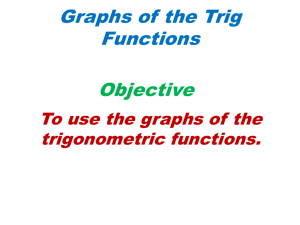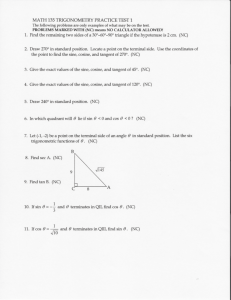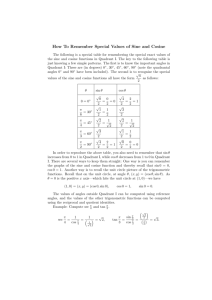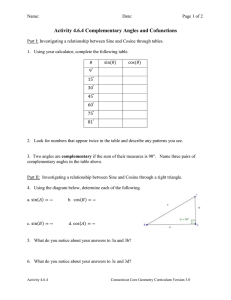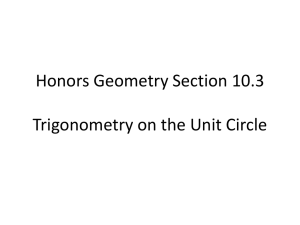Sine and Cosine of Complementary Angles
advertisement
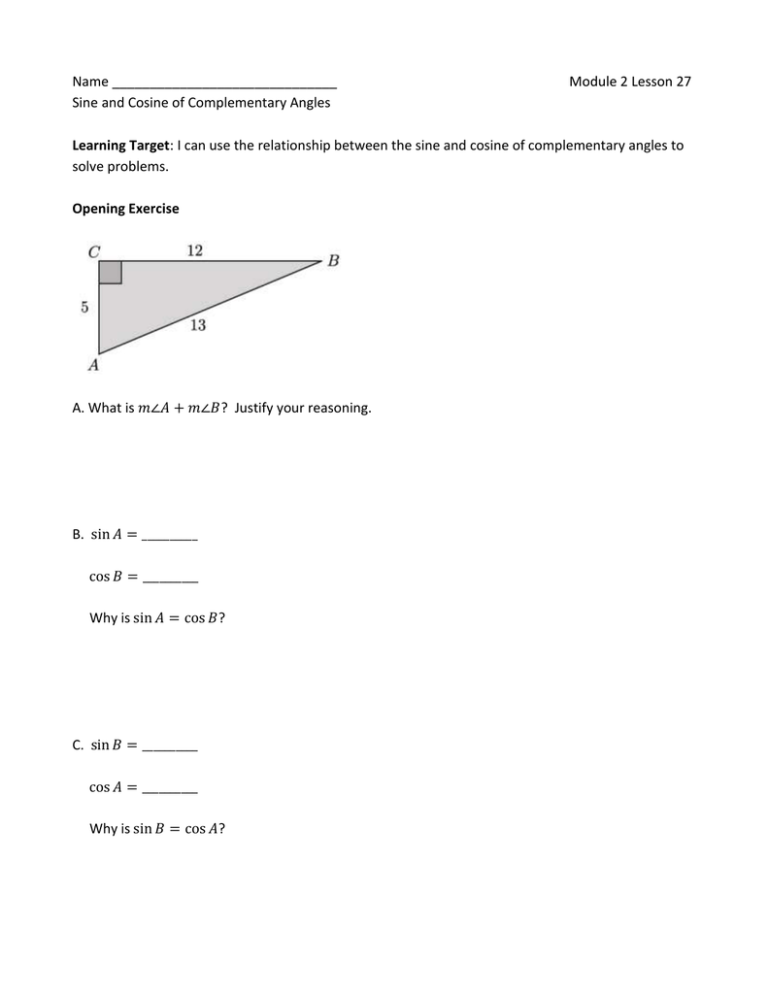
Name ______________________________ Sine and Cosine of Complementary Angles Module 2 Lesson 27 Learning Target: I can use the relationship between the sine and cosine of complementary angles to solve problems. Opening Exercise A. What is 𝑚∠𝐴 + 𝑚∠𝐵? Justify your reasoning. B. sin 𝐴 = __________ cos 𝐵 = __________ Why is sin 𝐴 = cos 𝐵? C. sin 𝐵 = __________ cos 𝐴 = __________ Why is sin 𝐵 = cos 𝐴? Sine and Cosine of Complementary Angles Sine and Cosine are cofunctions. This means that if 𝑚∠𝐴 + 𝑚∠𝐵 = 90°, in other words two angles are complementary, then sin 𝐴 = cos 𝐵. 1. sin 30 = cos _______. 2. If cos 72° = sin 𝑥, find the number of degrees in the measure of acute angle x. 3. If sin 6𝐴 = cos 9𝐴, what is 𝑚∠𝐴? 4. For what values of 𝜃 is sin 𝜃 = cos (𝜃 + 10) 5. For what angle measurement must sine and cosine have the same value? Explain how you know. 2 6. If ∠𝐴 is acute and tan 𝐴 = 3, then 1) 2) 3) 4) There are certain special angles where it is possible to give the exact value of sine and cosine. These are the angles that measure 0˚, 30˚, 45˚, 60˚, and 90˚; these angle measures are frequently seen. You should memorize the sine and cosine of these angles with quick recall! 𝜃 0˚ Sine 0 Cosine 1 30˚ 1 2 √3 2 45˚ √2 2 √2 2 60˚ √3 2 1 2 7. Use the values on the chart to determine the missing lengths in the triangle. 8. Use the values on the chart to determine the missing lengths in the triangle. 90˚ 1 0 Name ______________________________ Sine and Cosine of Complementary Angles 1. Find the value of 𝜃 that makes each statement true. a. sin 𝜃 = cos(𝜃 + 38) b. sin 𝜃 = cos(3𝜃 + 20) 𝜃 c. sin ( 3 + 10) = cos 𝜃 2. Determine the value of x. Module 2 Lesson 27 Problem Set 3. Determine the value of x and y. 4. Given an equilateral triangle with sides of length 9, find the length of the altitude. Name ______________________________ Sine and Cosine of Complementary Angles 1. Solve: sin 𝐴 = cos 32 2. Solve: cos 𝐵 = sin(𝐵 + 20) 3. △LMN is a 30–60–90 right triangle. Find the unknown lengths x and y. Module 2 Lesson 27 Exit Ticket
